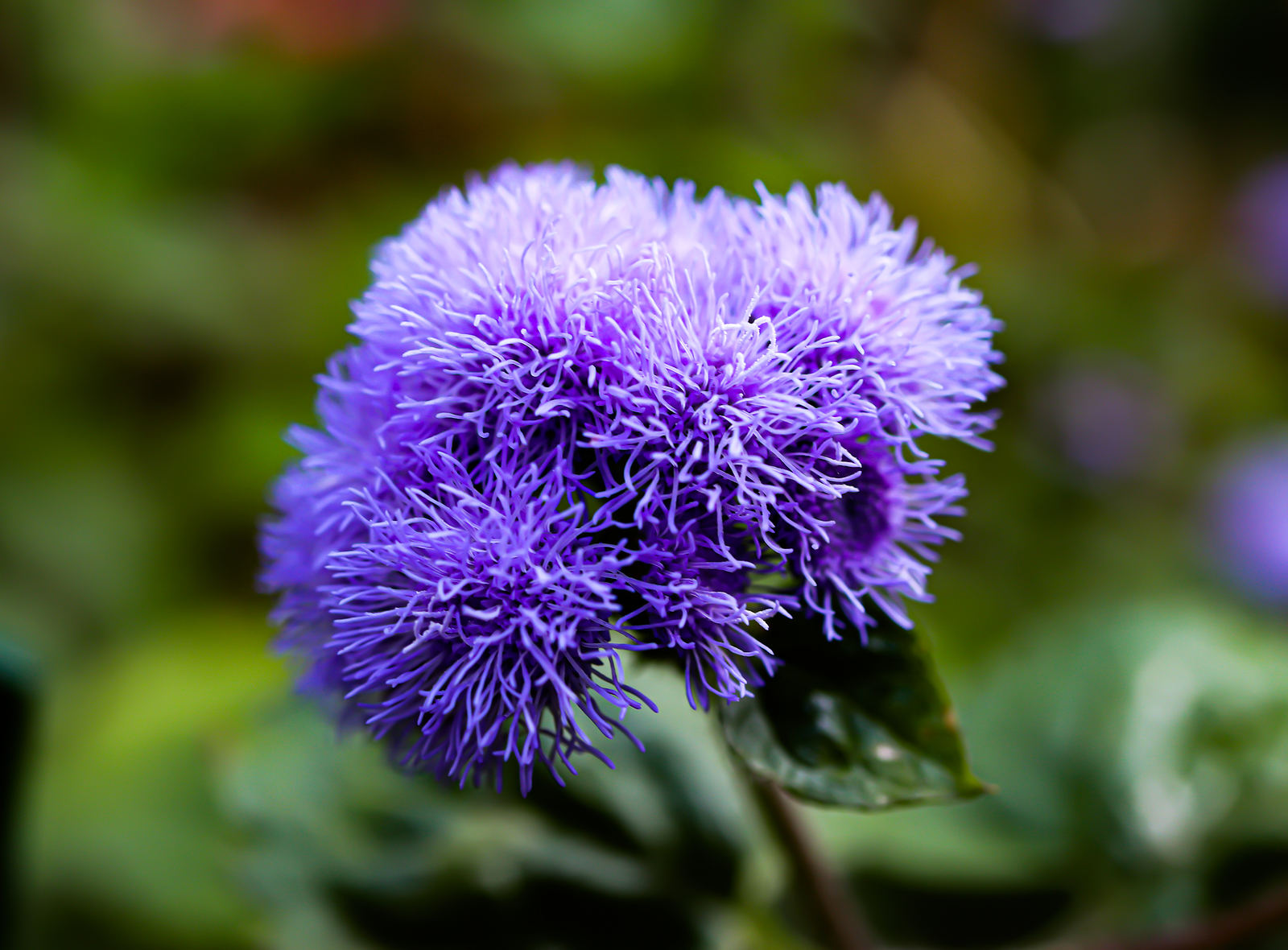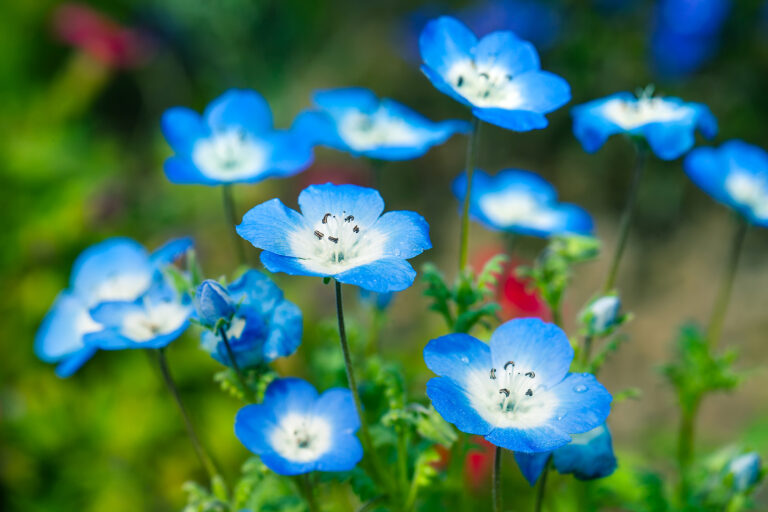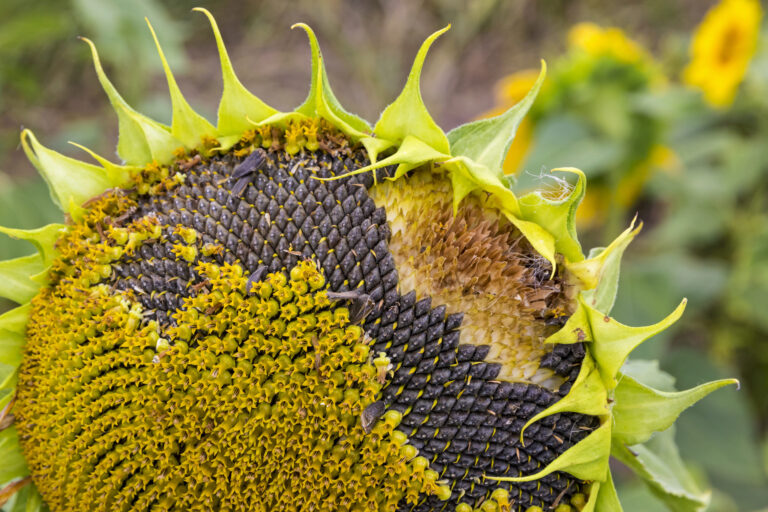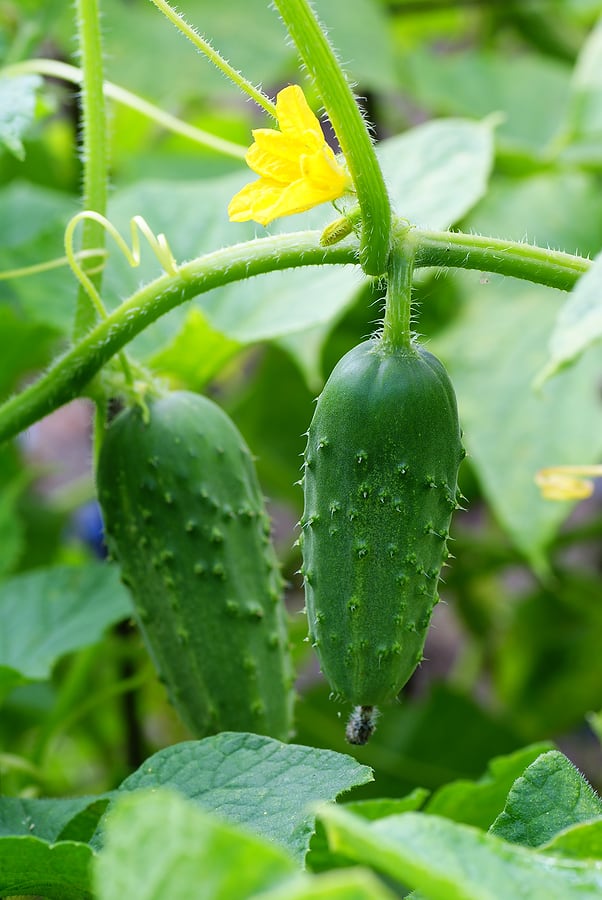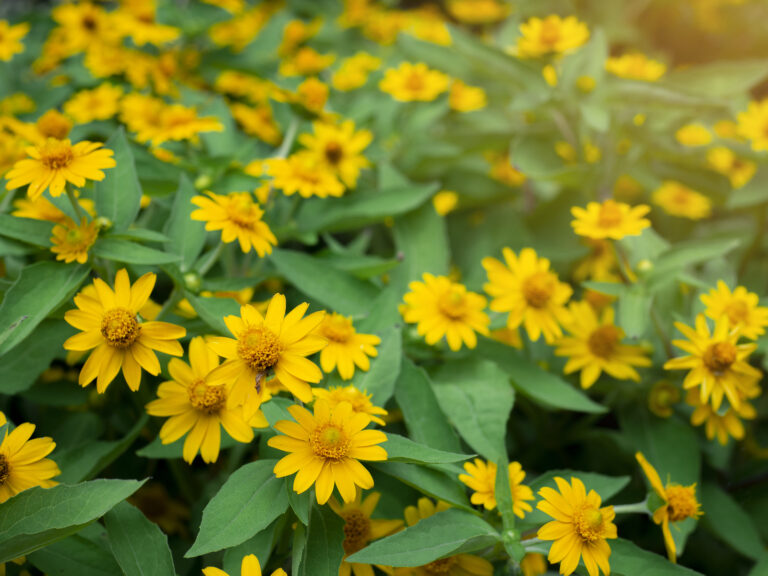How to Grow Floss Flower — Ageratum
Ageratum–commonly called floss flower–is a colorful low-growing annual that forms compact mounds of dark green leaves. The mounds are covered with fuzzy, wide white purple, or blue flowers. Ageratum blooms from early summer to the first frost in autumn.
Ageratum’s soft green leaves are roundish and often hear-shaped at the base. Flowers are tassel-like and appear in dense clusters. The plant is low-growing and spreading. Ageratum remains in bloom for many months. It readily reseeds itself.
Floss flower is easy to combine with other flowers. It is popular for edgings, borders, window boxes, and planters

Get to know Ageratum
- Plant type: Annual
- Growing zones and range: Zones 2 to 11
- Hardiness: Tender; tolerates cool to hot weather; killed by frost.
- Height and width: 6 to 10 inches (15-25cm) tall; 6 to 20 inches (15-51cm) wide; a few cultivars can grow to 24 inches (61cm) tall.
- Flower form: Small head of fuzzy flowers, in wide, flat bunches.
- Flower colors: Azure blue, lavender blue, white, pink
- Bloom time: Early summer to fall; anytime in frost-free regions.
- Uses: Edging plants, pattern planting, annual beds; tall types provide good cut flowers.
- Common name: Flossflower
- Botanical name: Ageratum houstonianum
- Family: Asteraceae
Where to plant Ageratum
- Plant floss flower in full sun. Plant in part shade where summers are hot.
- Ageratum wants well-drained garden soil with a soil pH of 6.5 to 7.5.
- Turn the soil and add aged compost and lightly fertilizer with an all-purpose fertilizer.
- Use ageratum as an edging for flower beds or as an accent in containers or window boxes.
Ageratum uses
- Ageratum is excellent for edging, bedding, or containers.
- Low-growing varieties are suited for borders and window boxes.
- Mix with other low-growing varieties such as sweet alyssum, dwarf marigolds, and petunias.
- Tall varieties can be added as background plants or used as cut flowers.
- Tall varieties of Ageratum are good cut flowers and last a long time in the water
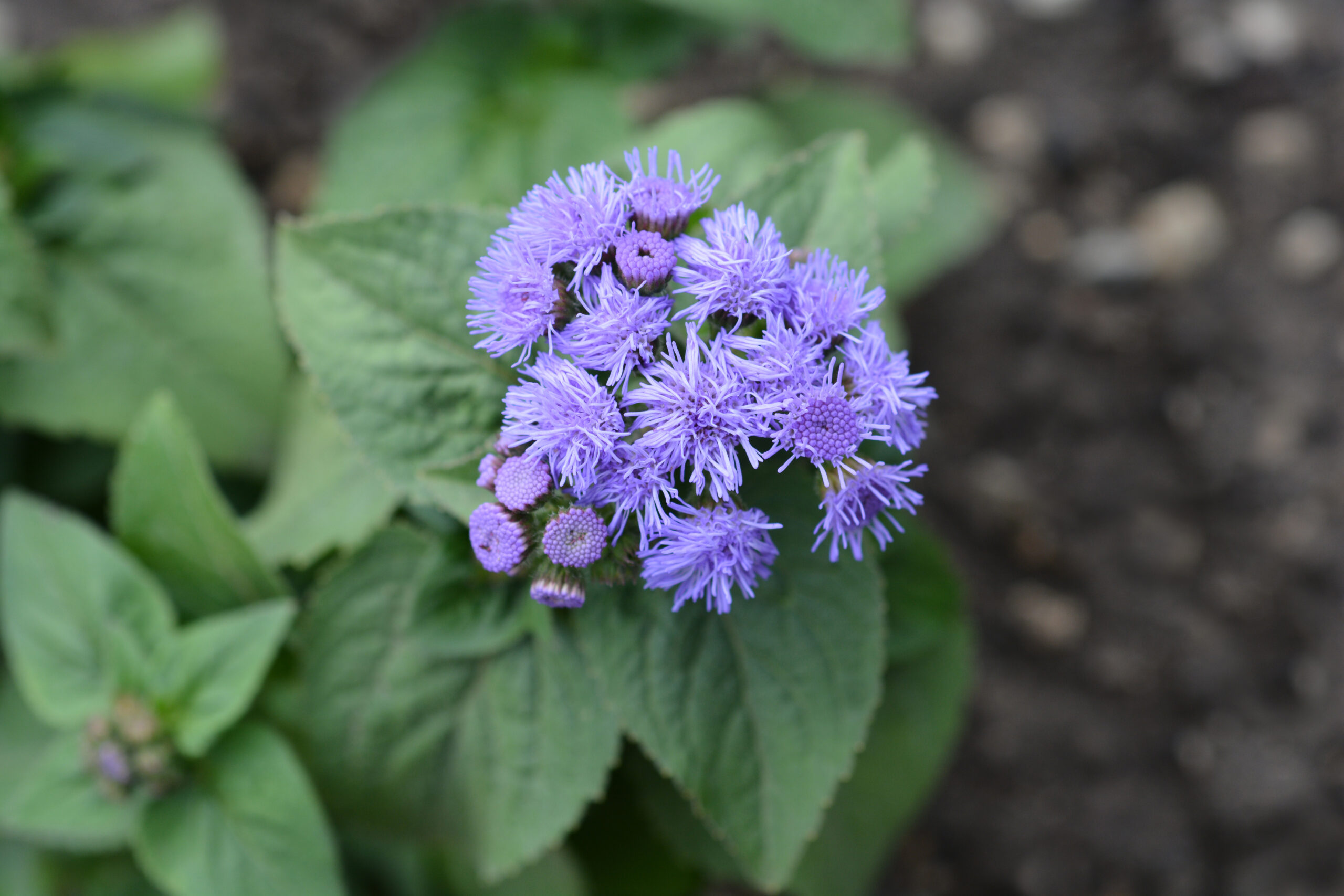
When to plant Ageratum
- Start seeds indoors 6 to 8 weeks before the last frost or later. Sow seeds 1/8 inches deep.
- Seeds germinate in 10 to 14 days in soil 65°F (18°C) or warmer.
- Transplant ageratum into the garden in spring after the danger of frost has passed. In Zones 10 and 11 plants can be set outdoors in winter.
- Sow seed outdoors after the last frost. Keep the seedbed evenly moist.
- In Zones 10-11, sow in winter.
Planting and spacing Ageratum
- Sow seeds outdoors in drills or rows about 2 inches (5cm) deep. Plant seeds 1 to 2 inches (2.5-5cm) apart and cover with 1/8 inch of soil.
- Thin or transplant seedlings when they are large enough to handle if crowded.
- Set indoor started ageratum seedlings in the garden as soon as they are large enough to handle.
- Harden-off seedlings started indoors in the shade for several days before planting.
- Set plants into an evenly raked garden bed.
- Space plants 8 to 10 inches (20-25cm) apart.
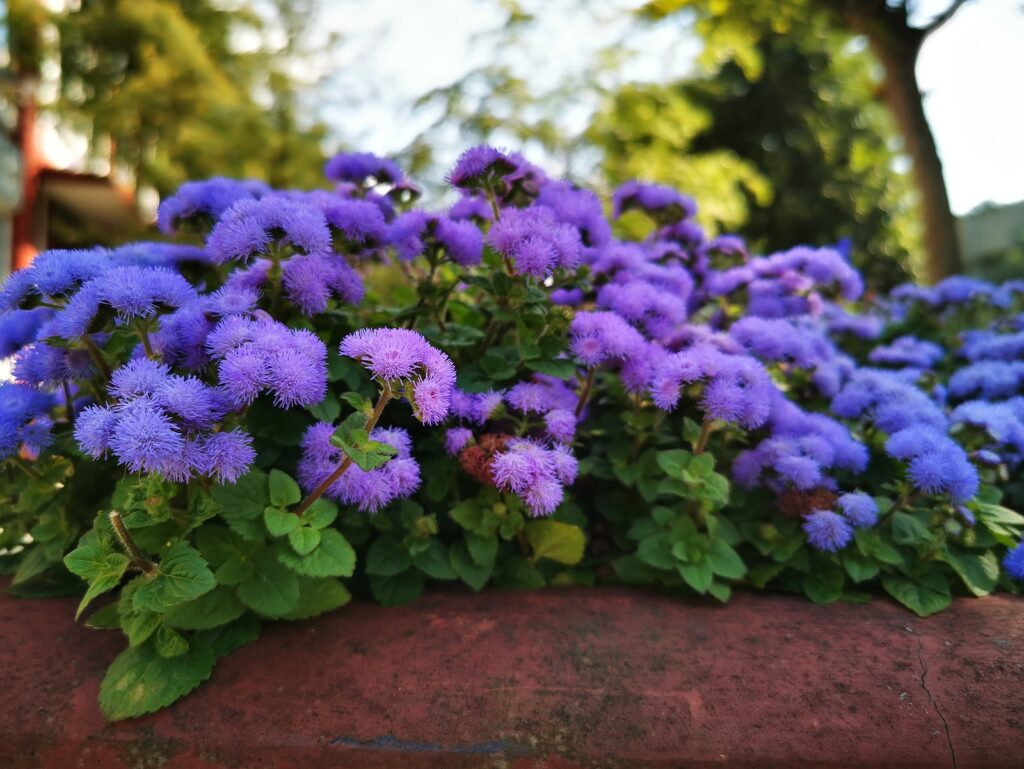
How to water and feed Ageratum
- Keep the soil evenly moist for floss flower. Plants can tolerate wet or dry soil.
- Water at the base of plants decreases the chance of fungal disease.
- Feed ageratum before they bloom and again in midsummer. Use a slow-release fertilizer.
Flower garden success products at Amazon:
- Wildflower Seed Mix Attracts Hummingbirds and Butterflies
- Eden Brothers All Perennial Seed Mix
- 10 pcs Stainless Steel Garden Hand Tool Set
- Gorilla Cart 4 Cu. Ft, 300-pound Capacity
Ageratum care
- Remove spent blooms to keep floss flower blooming over a long season.
- Ageratum often reseeds in warm, moist climates.
- Remove and replace exhausted plants in midsummer if necessary.
- Taller varieties can be used as cut flowers.
Ageratum propagation
- Seeds germinate in 5 to 10 days at 60° to 70°F (16°-21°C). Plants will be large enough for transplanting in 12 to 18 days. Flowers usually appear 10 to 11 weeks after sowing.
- Plants take 6 to 10 weeks to reach transplant size.
- Ageratum can be propagated from cuttings.
Good Products for Seed Starting Success at Amazon:
- Jump Start Germination Station w/Heat Mat Tray, 72-Cell Pack, Dome
- Espoma Seed Starting Mix
- 200 Count- Jiffy 7 Peat Soil Seed Starting Plugs
- Seed Starter Kit with Humidity Dome (120 Cells Total Tray)
- AgrobriteT5 Fluorescent, 2-Foot, Grow Light System
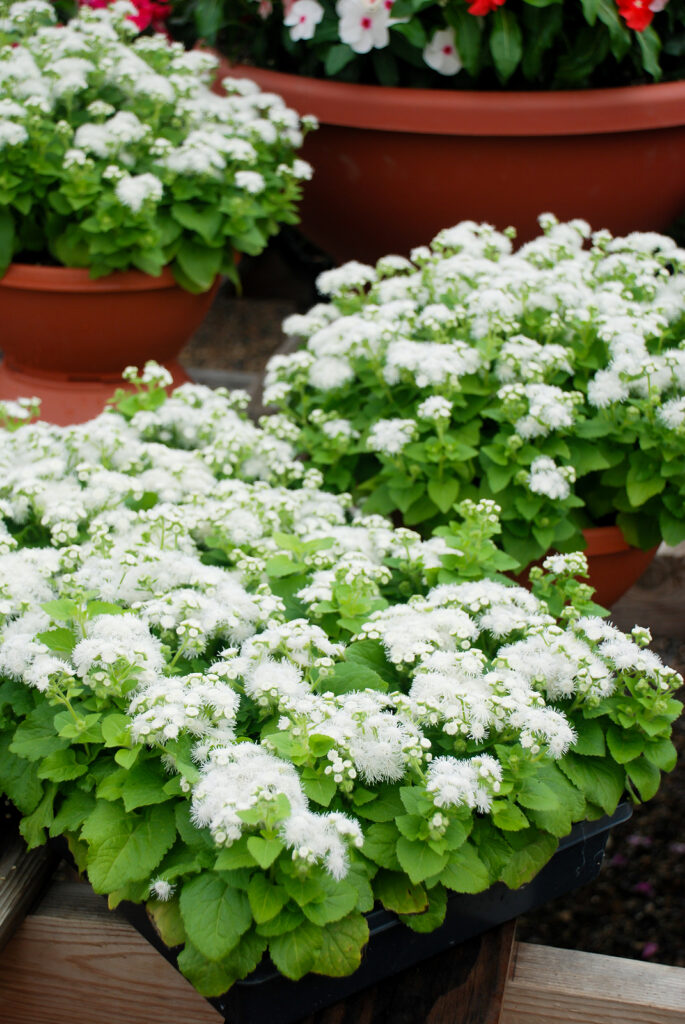
Ageratum varieties to grow
- Ageratum houstonianum. Most commonly planted Ageratum grows from 6 to 8 inches (15-20cm) tall. Cultivars include ‘Blue Horizon’ which can grow to 18 inches (45cm) tall, and ‘Blue Mink’ which can grow to 12 inches (30cm) tall; other cultivars include ‘Red Top’, ‘White Bouquet’, ‘Blue Mink’, ‘Hawaii’, ‘Pink Powderpuffs’, and ‘Wonder White’. The tall cultivars make good cut flowers.
Ageratum frequently asked questions
Q: How can I start ageratum outdoors in the garden?
A: Ageratum seeds can be sown outdoors in late spring when the danger of frost is past. You can also start Ageratum indoors. Do not cover the seeds; they need light to germinate. Seedlings can be transplanted when the first true leaves appear.
Q: What are the best conditions for growing Ageratum?
A; Ageratum can grow in most soils but does best in humus-rich, moist, well-drained soil. Water when the ground starts to dry out and fertilize monthly with a water-soluble food. Cut back Ageratum when it becomes leggy.
Q: Why does my Ageratum not bloom in summer?
A: Ageratum does not like high heat or humidity and will not bloom in those conditions. Plant Ageratrum in fall or spring if your summers are hot and humid.
Related Articles:

